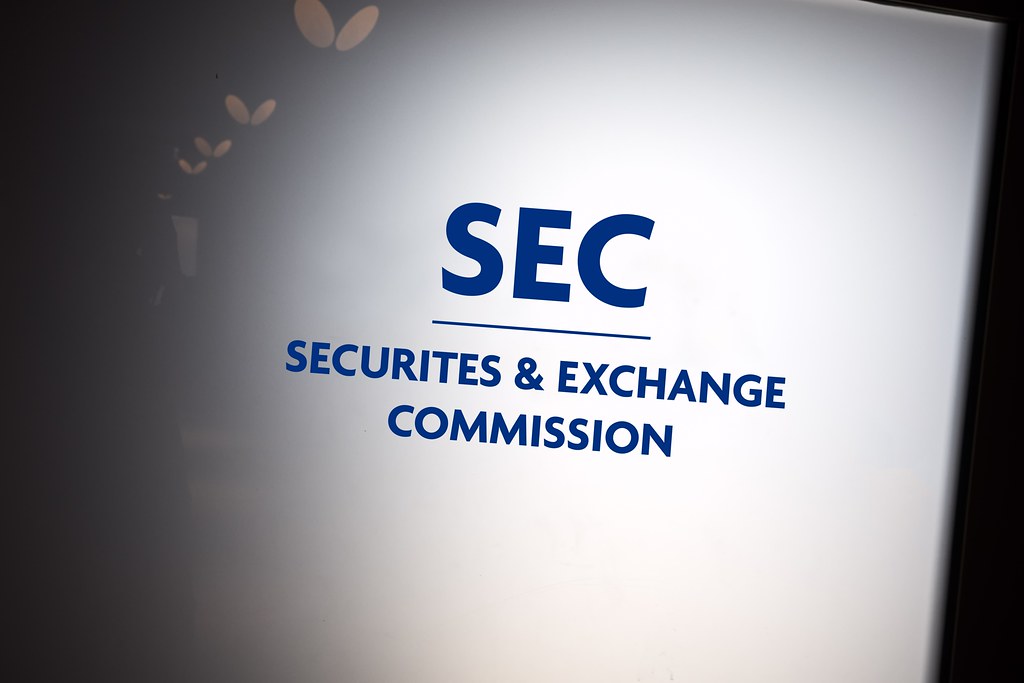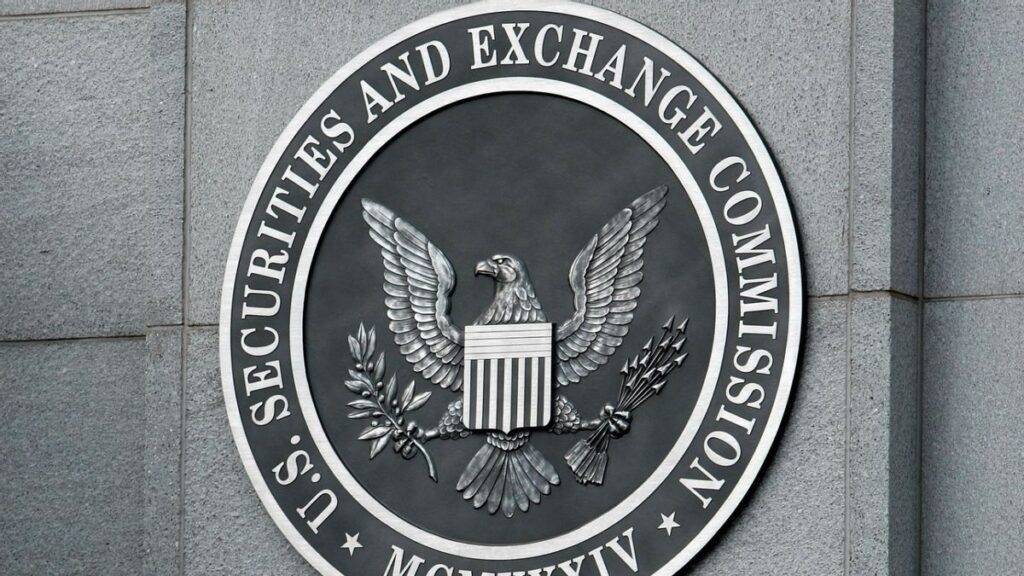Main Points:
- Introduction: Overview of SEC’s evolving stance on cryptocurrency regulation and the historical context under the Trump administration.
- SEC Crypto Task Force Meetings: Insight into recent meetings with industry stakeholders and their implications for future enforcement actions.
- Proposals for a Regulatory Sandbox: Discussion on potential regulatory frameworks that acknowledge the unique nature of cryptocurrencies.
- Recent Developments & Industry Reactions: Analysis of current trends, court decisions, and industry responses that highlight a possible shift in regulatory strategy.
- Implications for the Crypto Market: Examination of how a softer regulatory approach might impact new digital assets, revenue streams, and blockchain applications.
- Looking Ahead: Future prospects for SEC leadership and evolving regulatory paradigms in the U.S.
In recent months, there has been growing speculation that the U.S. Securities and Exchange Commission (SEC), under a new leadership era, might be set to retract some of the enforcement actions initiated against cryptocurrency companies during the Trump administration. This article delves into the details of these developments, examines the context and motivations behind the shift, and incorporates the latest trends and industry perspectives to provide a comprehensive picture for investors and blockchain practitioners alike.
Over the course of the past few months, several filings and internal documents have revealed that officials within the SEC’s Crypto Task Force have been engaging with a broad spectrum of industry participants. These discussions, spanning meetings with representatives from groups like the Crypto Council for Innovation, Zero Hash, Paradigm Operations, and even figures such as Michael Saylor, indicate a potential reassessment of the SEC’s longstanding view that many cryptocurrencies qualify as securities. With a significant portion of the enforcement actions initiated during former Chair Gary Gensler’s tenure under scrutiny, the possibility of rolling back some measures is stirring both optimism and caution in the digital asset space.
SEC Crypto Task Force Meetings:
Since its establishment on January 21, the Crypto Task Force, led by Commissioner Hester Peirce, has engaged in intensive dialogue with several key industry stakeholders. Over the last week alone, multiple meetings have taken place aimed at addressing regulatory concerns surrounding digital assets. These discussions were not isolated events but part of a broader initiative to revisit and potentially recalibrate the regulatory framework governing cryptocurrencies. The task force’s meetings with prominent industry figures, including blockchain technology firms and crypto investment companies, signal a willingness to listen to the perspectives of those directly impacted by current SEC enforcement policies.

Proposals for a Regulatory Sandbox:
One of the most noteworthy proposals emerging from these discussions is the concept of a “regulatory sandbox.” In a statement titled “There Must Be Some Way Out of Here,” Commissioner Peirce called for a framework that would allow cryptocurrency projects to operate under experimental conditions, free from the immediate burden of strict regulatory oversight. This initiative could enable blockchain innovators to test their projects in a controlled environment, helping regulators gather real-world data on the operational risks and benefits of digital assets. By providing a temporary reprieve from enforcement actions, the sandbox model aims to strike a balance between investor protection and fostering innovation within the crypto ecosystem.
Recent Developments & Industry Reactions:
The potential regulatory pivot has not occurred in isolation. Recent actions by the SEC itself underscore a broader trend toward reevaluating its stance on cryptocurrency regulation. For example, on February 19, the SEC submitted a request to the courts to voluntarily withdraw an appeal against parts of controversial securities broker regulations targeting crypto companies. Additionally, investigations into major platforms such as Robinhood Crypto and OpenSea have either concluded or are nearing completion, with some enforcement actions against exchanges like Coinbase possibly facing reversal. These moves suggest that under the current leadership and pending the appointment of a new SEC Chair—possibly former Commissioner Paul Atkins—the agency might adopt a more lenient, industry-friendly posture. This aligns with broader market sentiments that favor clearer, more pragmatic guidelines over heavy-handed enforcement that might stifle innovation.
Recent coverage from industry sources and regulatory analysts highlights that these developments are being closely watched. Some experts argue that the SEC’s pivot could be interpreted as an acknowledgment that digital assets do not neatly fit into the conventional definitions of securities. Furthermore, the discussions held by the Crypto Task Force with key market players have introduced fresh perspectives on how blockchain technologies should be regulated, suggesting that a one-size-fits-all approach might be outdated in the fast-evolving crypto landscape.
Implications for the Crypto Market:
For investors seeking new digital assets and revenue streams, the SEC’s potential rollback of enforcement actions is significant. A regulatory environment that is more accommodating of crypto innovations could lead to an influx of new projects and a more dynamic market overall. This shift may reduce the compliance burden on startups and established crypto companies alike, encouraging them to explore innovative business models and adopt blockchain solutions that drive efficiency and transparency in various sectors.
Moreover, the introduction of a regulatory sandbox could provide a testing ground for novel financial instruments and decentralized applications (dApps). By allowing these projects to operate under supervised conditions, the SEC could both safeguard investors and promote technological advancements. The anticipated regulatory clarity is expected to attract institutional investors who have been wary of an overly aggressive regulatory stance, thereby potentially increasing the liquidity and credibility of the crypto market.
Looking Ahead – Future Prospects:
The future regulatory landscape for cryptocurrencies in the U.S. remains uncertain, particularly as the SEC awaits the formal appointment of a new Chair. While the current meetings and discussions point to a regulatory pivot, significant questions remain about the pace and extent of change. If former SEC Commissioner Paul Atkins is confirmed as the next Chair, his leadership may bring about a more balanced approach that reconciles investor protection with the need for innovation in the digital asset space.
Additionally, the U.S. Senate’s role in confirming new leadership, alongside evolving economic and political pressures, could further shape the SEC’s strategy. With recent developments both in legislative discussions and industry feedback, the coming months will be critical in determining whether the SEC will continue on its current path or return to a more stringent enforcement regime reminiscent of previous years.
Regulatory changes in this area are particularly consequential given the rapid pace at which the crypto market evolves. For blockchain practitioners, the potential rollback of enforcement actions signals a move toward a more collaborative regulatory framework. Such a framework could encourage more experimentation and ultimately lead to a more robust, mature crypto ecosystem.
Incorporating Recent Trends:
Looking at recent trends beyond the immediate SEC decisions, several broader patterns are emerging in the global crypto landscape. For instance, regulatory bodies in other major economies have been experimenting with similar sandbox approaches. In the United Kingdom, the Financial Conduct Authority (FCA) has already initiated pilot programs that allow for limited regulatory exemptions in the fintech space. Similarly, in Europe, the European Commission is actively discussing how to modernize existing financial regulations to better accommodate digital assets. These parallel developments indicate that the U.S. is not alone in grappling with the challenges posed by the rapid advancement of blockchain technologies.
Furthermore, innovations in decentralized finance (DeFi) and non-fungible tokens (NFTs) continue to push the boundaries of what is considered a traditional financial asset. This evolution has prompted regulators worldwide to reconsider their frameworks, acknowledging that many digital assets operate in a realm that differs significantly from conventional securities. As industry players push for clearer regulatory guidelines, the SEC’s current trajectory could be seen as part of a broader global movement toward more nuanced oversight that recognizes the unique characteristics of blockchain technology.
Future outlook:
The evolving regulatory landscape for cryptocurrencies in the U.S. reflects a critical juncture in the relationship between regulatory authorities and the digital asset industry. With the SEC’s Crypto Task Force actively engaging with industry leaders, proposals such as the regulatory sandbox gaining traction, and recent enforcement actions being reconsidered, the message is clear: the era of heavy-handed regulation may be giving way to a more balanced, innovation-friendly approach. For investors, blockchain developers, and entrepreneurs, these changes herald new opportunities to explore emerging digital assets and leverage blockchain technology for real-world applications. While uncertainties remain—particularly regarding leadership transitions and the pace of regulatory reform—the current momentum suggests a promising future for the crypto market, driven by a collaboration between regulators and industry stakeholders.
As the SEC continues its internal review and potential recalibration of enforcement policies, industry observers and participants are advised to stay informed through reliable sources and to remain adaptable in the face of evolving regulatory norms. The next few months will be pivotal in determining the long-term impact of these shifts on the digital asset ecosystem, and industry stakeholders would do well to prepare for a dynamic period of change and innovation.


